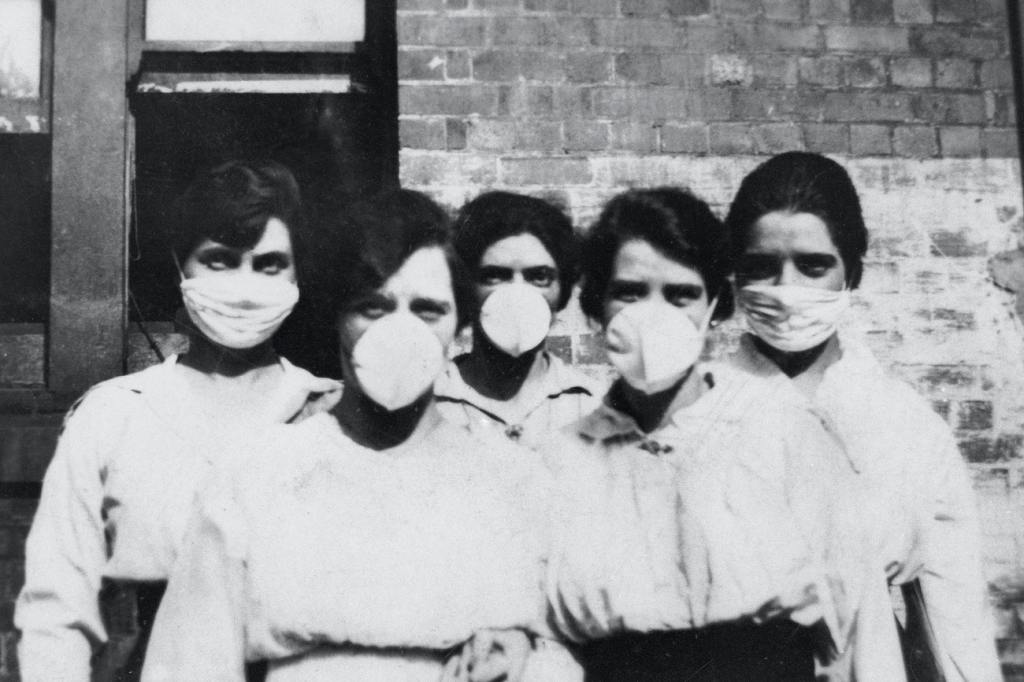
I have had a recent change in uniform at the hospital. Just like everyone else I continue to wear a surgical mask all the time (unless I’m in my private office) but previously, when going into the COVID-19 patients’ rooms, I would double mask with a surgical mask on top of an N95. If you want to try this at home, put on an N95 mask then a surgical mask on top of that. Then put on a gown and gloves. Next, go into a room with a negative pressure device that makes as much noise as industrial fan. Alternatively, put a garbage bag over your head, tie it around your neck, turn on a vacuum cleaner, and then try to have conversation with someone who is deathly ill. You have no idea the extent of the heroism of frontline health workers in this pandemic who suffer through this for hours upon hours, day after day.
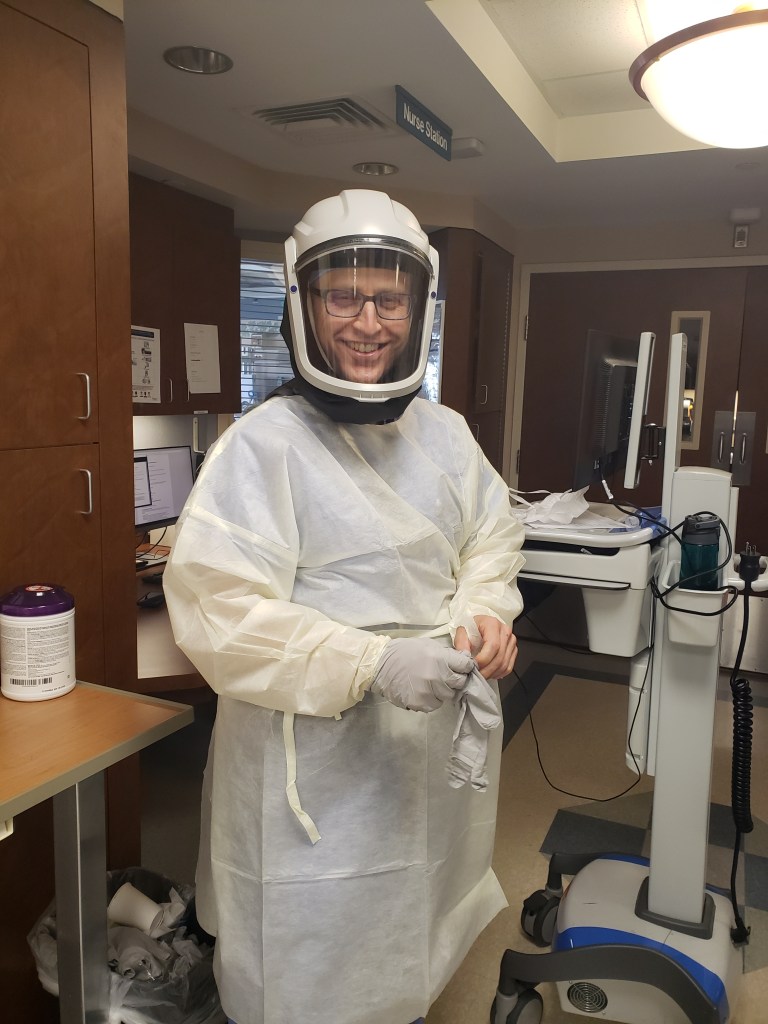
Fortunately, at our hospital, we have PAPRs (powered air purifying respirators). This is a helmet with a battery powered air filtration system. They have limited battery life and the fan makes a bit of noise but you can breathe in them. I started using a PAPR and am now a big fan. This brings up the larger conversation of mask wearing that is happening across the world.
Face coverings of all kinds have become the ubiquitous marker of the pandemic; they divide the believers from the non believers; their presence or absence has become a marker of political affiliation; and for many they offer a new way to accessorize, but do they even help?
This question is compounded by what was by all accounts a public health messaging fiasco. Early in March, the CDC and WHO recommended that masks should not be worn by people outside of healthcare settings unless the individual was sick. Not one month later, everything was flipped on its head and masks were universally recommended, and in some places mandated. The next thing you knew everyone’s aunt who could sew was making face coverings (until Amazon put poor, old Aunt Gertrude out of business). What happened? Why can’t they get their story straight?
We should begin with a defense of our public health professionals who are a group of really smart and dedicated people working very hard to keep us all safe (usually turning down much higher paying jobs to do so). They are not trying to get elected or win a popularity contest. We all forget how fast this pandemic overwhelmed everyone and how little was known about the spread of the virus. One public health expert said that it was like trying to build the boat while you are out at sea. To expect that their recommendations would be based on perfect data and never change is unrealistic and unfair (for more about the dangers of faulty expectations read “How to be happy in the pandemic“). If they were only to make recommendations based on perfect evidence they would never make any recommendations, making this pandemic a far worse disaster. Even with the uncertainty, the vast majority of the recommendations they make are found to be correct in time. You’re always better off betting on the smart people with all the degrees.
One public health expert said that it was like trying to build the boat while you are out at sea.
The main concern that led to the initial recommendation against wearing masks was a serious shortage of PPE in hospitals. You may have forgotten that this was a huge concern early in the crisis. A shortage of masks is obviously a problem for the healthcare workers themselves but also for the system as a whole. You can’t have half the hospital staff out sick in the middle of a pandemic. This could lead to a near zombie apocalypse level of chaos. This was heavy on the minds of the CDC and WHO in February and March. If they recommended masks for everyone, this could lead to an even greater crisis from the certain hoarding that would ensue.
The big change in April was triggered mainly by two factors that changed the calculation of risk vs. benefit. First, there was new research showing a significant amount of spread by people without symptoms. It was reported that people were very contagious before they had symptoms and that these individuals could be a major force behind the rapid spread of the virus. In fact, there is evidence that the few days before symptoms is when people are the most contagious. This is when these poor souls are unaware of their contagiousness and not taking any precautions. It’s a perfect storm of viral spread. The second fact that caused them to change their recommendations was the improved mobilization of manufacturing that improved availability of surgical masks. This lessened their concerns about shortages.
So what are the types of masks, how are they made, and what is the evidence that they are effective?
Surgical Masks
Surgical masks have three-layers, which are specifically made so the outside is waterproof, the middle layer is a filter, and the inner layer can absorb moisture. The filter layer is electrostatically charged to help trap the virus. These masks are fluid resistant and very good at blocking large droplets. The virus adheres to the fibers without necessarily blocking the open spaces, still allowing air to flow easily across the filter.
There is ample evidence that surgical masks are effective at blocking respiratory viruses that transmit on large droplets (see study 1, study 2, and study 3 for a sample). One study even showed that surgical masks can be as effective as N95s for preventing influenza like diseases. Another that surgical masks were 100% effective in blocking seasonal coronavirus in droplets ejected during breathing even when unfitted.
N95 Masks
N95s get their name because they block 95% of 0.3+ micron particles. They are tight fitting masks made out of an electrostatic non woven propylene fiber. They block all airborne pathogens coming in or out including the smaller aerosolized pathogens.
N95s are used in healthcare settings, but are also used industrially. This is an important distinction. In the industrial or workplace setting the goal is only to block the air particles from coming IN. In the healthcare setting we want to block particles in the air from coming IN and particles in you from going OUT. This is crucial because many N95s for non medical use have an exhalation valve. This reduces resistance to airflow when you breathe out and makes the masks more comfortable which is nice. The problem is that these masks do not block viral particles from being exhaled and do not prevent the spread of COVID-19. They should not be used. Only use masks that are labeled for medical use.
The majority of the transmission of SARS CoV-2 is through large respiratory droplets. These fall to the ground within 6 feet (most by 2-3ft). This is why social distancing is so important. There is some evidence, however, that there are some smaller particles that become aerosolized and can remain in the air for several hours, especially indoors in spaces with poor circulation. But, it is not believed that these small particles are enough of a threat outside the hospital to warrant their use by everyone everywhere.
Cloth Face Masks
This is whatever Aunt Gertrude sews up for you. It could be a scarf, bandana, etc. The effectiveness of the mask depends on how its made. Those that are made from only a thin layer of cotton are certainly more comfortable due to the spaces in between the fibers making them more breathable. The problem is that these same spaces also allow the virus to easily flow in and out making the masks less effective.
One unintentionally prescient preCOVID-19 study took random household items such as an old t-shirt, kitchen towel, and vacuum cleaner bag to see what would happen if people made their own masks out of whatever they could find at home. It also used surgical masks as a comparator. Subjects were then exposed to a harmless respiratory virus while wearing the masks to see if they would get infected.
The winner was the surgical masks by far. Second was the vacuum cleaner bags which also happen to be impossible to breathe through. The other fabrics blocked about half the viral particles. This means that surgical masks are better but if everyone wore cloth masks it would potentially cut viral transmission by half which would have a huge impact and prevent PPE shortages.
Homemade cloth masks have also been shown to reduce droplet excretion caused by speech and coughing/sneezing. Additionally , masks made from cotton T-shirts significantly decrease the number of respiratory microorganisms expelled by coughing. Video evidence of this can be found here.
The Evidence for Masking in General
I have presented evidence for the individual types of masks specifically, but what about the evidence for masking in general? Do we really need to wear masks?
Mathematically modeling by multiple teams has shown that universal masking could cut the transmission rate dramatically and to a level that would stop the spread of the disease. The more people that wear masks the better the response.
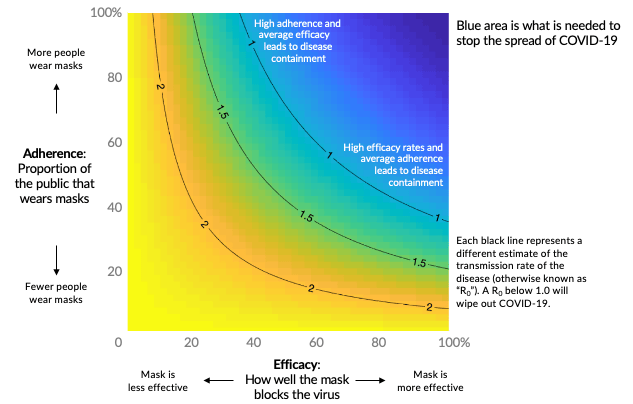
South Korea had rapid community spread that tracked the trajectory in Italy in the initial weeks back when northern Italy was a war zone. Then, in late February 2020, the government provided a regular supply of masks to every citizen. From that point, everything changed. As Italy’s death count accelerated to horrific levels, South Korea’s started decreasing.
European neighbors Austria and the Czech Republic introduced social distancing requirements on the same date, but the Czech Republic also introduced mandatory mask wearing. The Austrian case rate continued its upward trajectory, while the Czech Republic’s flattened out. It wasn’t until Austria also introduced mask laws weeks later that the two countries returned to similar trajectories.
It has become clear that the issue of masking has irritated those who are sensitive to any encroachment on individual liberties. This is understandable but has led to mask wearing turning into a political issue. This is a shame because what we have clearly seen in the past few weeks in many parts of the country is that the virus doesn’t care about politics. It doesn’t care if you believe it is gone. If restrictions are eased without good mask wearing (along with distancing and contact tracing) the numbers all go up. This graph tells the story:
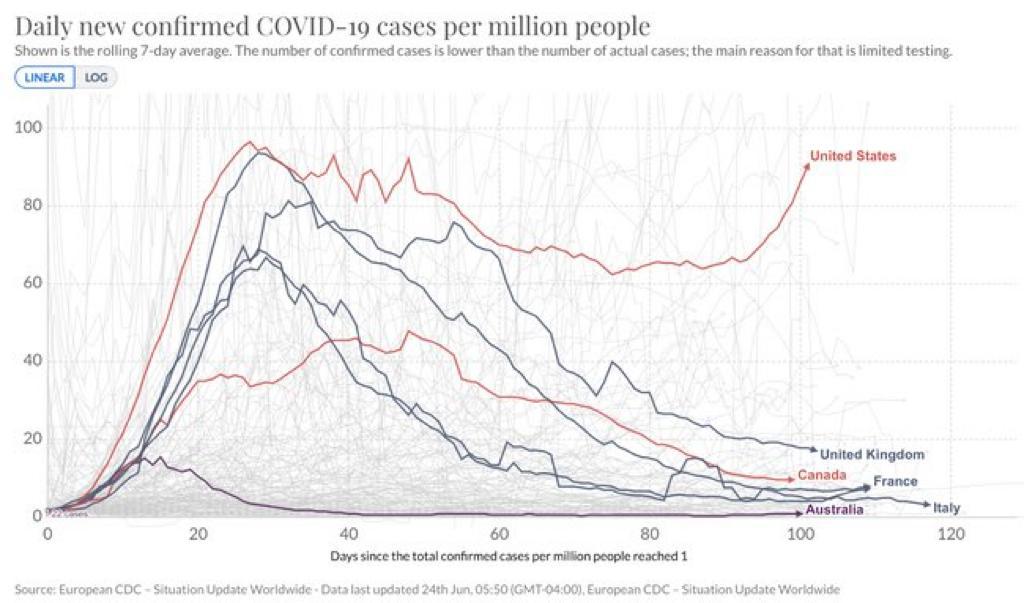
Answering the Critics
Many will bring evidence that masks are not that effective at preventing disease. The problem is that this is based on research that evaluates the ability of masks to prevent the person wearing the mask from getting infected and not how well it protects him or her from infecting others. This was part of the problem with the early messaging from the public health authorities as they were basing their recommendations on the data available at the time. The masks are much more effective at the latter. Unfortunately, most of the research available at the beginning of the pandemic focused on the former.
The second avenue of critique of the masking data is that it is not based on randomized controlled trials. These are the gold standard for evidence in medical research. Critics will site a “lack of good evidence” for benefit as a reason for not recommending masks. The first response to this is that lack of evidence is not evidence of lack. It is impossible and unethical to test mask-wearing, hand-washing or social distancing during a pandemic so we are left making decisions with the best information available which is not a bad thing. When a simple experiment finds evidence to support an intervention and that intervention has a limited downside, policymakers should act before a randomized trial is done.
Doing nothing is doing something in a pandemic such as this. The evidence for benefit is imperfect but it comes from multiple lines of reasoning and multiple reputable sources. It was published by people who have no vested or political interest in the data they publish. The overwhelming odds are that masks are beneficial and crucial. The more we comply as a society with mask wearing and physical distancing the better it will be for all of us. It is certainly a sacrifice to follow the recommendations, but it is a sacrifice for the well being of your loved ones, neighbors, communities, and your country. I can think of no better way to express your patriotism as we approach Independence Day.
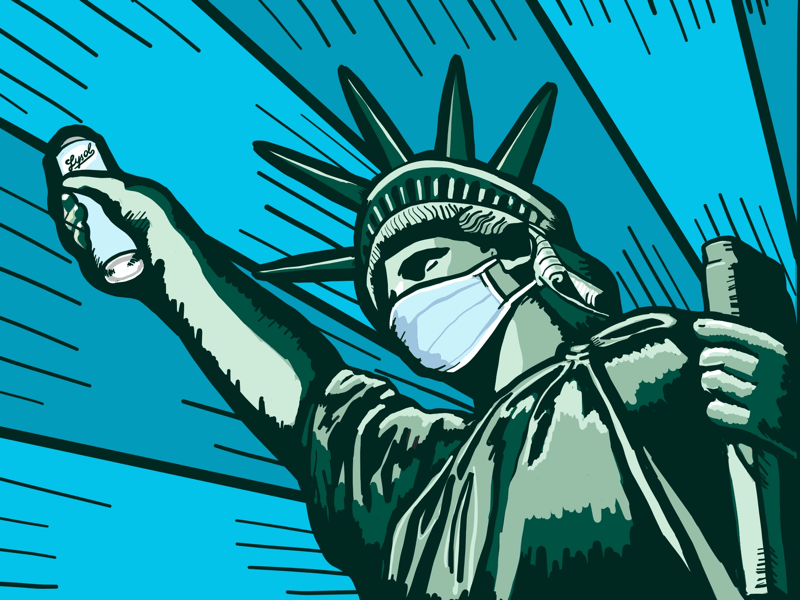
I agree the virus is contagious and those with serious underlying health issues are at risk- but even a cold or regular flu can compromise their well being- that being said- my personal responsibility and liberties are infringed upon and the risk of catching a flu with a 3+% of recovery is not worth liberties be diminished and disregarded and made into political discourse
LikeLike
The 3% recovery is based on data taken in places with social distancing and masking. If you want to see what happens without these interventions look at the date from Italy in February and New York in March. Its also more than the absolute mortality numbers, if the hospitals get overrun it can shut down the healthcare system and increase the risk of dying from other causes. Currently Houston is at 97% ICU capacity and they haven’t seen their curve level off yet. You’re wearing a mask and distancing to save the lives of others which the evidence is clear these interventions are beneficial for. There is a long list of reasons why this virus is more deadly than flu.
LikeLike
I actually agree with Karlina. A while ago I was stopped by the police while driving. I am over 21. I have every right to drink a few beers if I want. It is an infringement of my rights to tell me I can’t drive my own car.
LikeLike
I don’t think some people can get past their rights. What about my rights? Don’t make your family, friends and neighbors sick. You may be a carrier.
Listen to the medical people and do what is right for all of us. Don’t get stuck on stupid!
LikeLike
I think we should focus not just on rights but on responsibilities. Also, true libertarian principles believe that an individual should have unfettered liberty up until the point where their liberties infringe on someone else’s. Someone else’s right to not wear a mask is limited by my right to not get covid
LikeLike
Dr Grove, I enjoy reading your posts and regularly share them with friends and family. Your style of writing is clear with just enough mix of medical/layman terminology. Regarding masks, I wish everything did not have to become so political. Why can’t we just view it as common courtesy? Why do people act like they are being asked to cut off their left arm?
LikeLike
Hello Dr. Grove,
Are face sheilds effective at preventing spread or protecting the wearer?
LikeLike
Not as a substitute for masks. They offer extra protection in addition to masks in high risk environments such as hospitals and close contacts with infected individuals.
LikeLike
What are all those little “holes” that can be found on KN95 masks? They don’t actually got through from one side of the mask to the other, but they seem to have a very flimsy layer of filter in these holes. When I say holes, I mean for example when the letters on mask spell KN95- these are made of these little holes which obviously are not 4/5 ply filtration? Thanks
LikeLike
I’m sorry but I’m not expert on the engineering of the masks. I know that medical use surgical masks are very effective and that’s what I use. I only use an N95 when I’m in a room with an actively infected patient .
LikeLike
I don’t know much about the masks themselves, sorry
LikeLike